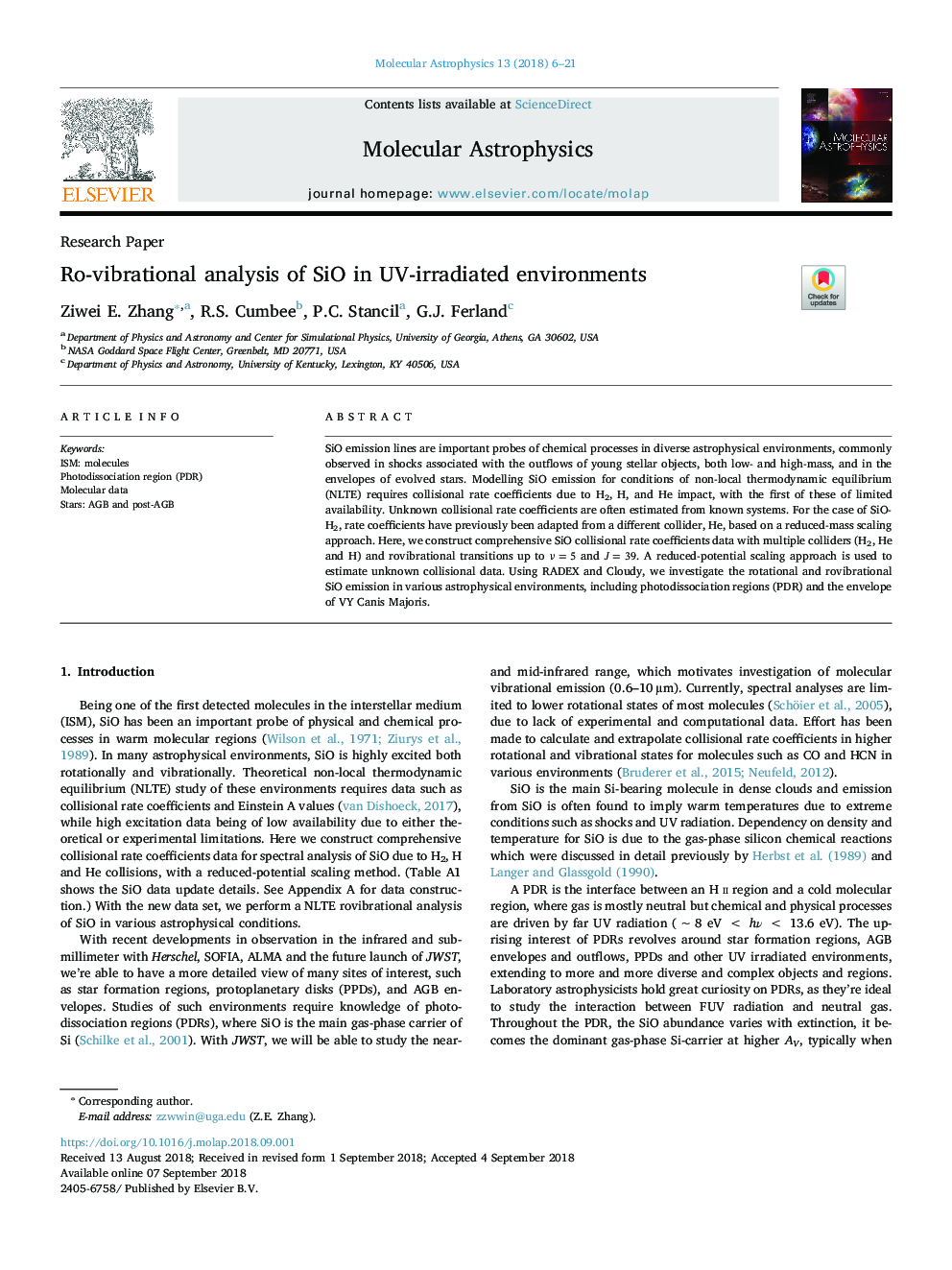| Article ID | Journal | Published Year | Pages | File Type |
|---|---|---|---|---|
| 9953441 | Molecular Astrophysics | 2018 | 16 Pages |
Abstract
SiO emission lines are important probes of chemical processes in diverse astrophysical environments, commonly observed in shocks associated with the outflows of young stellar objects, both low- and high-mass, and in the envelopes of evolved stars. Modelling SiO emission for conditions of non-local thermodynamic equilibrium (NLTE) requires collisional rate coefficients due to H2, H, and He impact, with the first of these of limited availability. Unknown collisional rate coefficients are often estimated from known systems. For the case of SiO-H2, rate coefficients have previously been adapted from a different collider, He, based on a reduced-mass scaling approach. Here, we construct comprehensive SiO collisional rate coefficients data with multiple colliders (H2, He and H) and rovibrational transitions up to v=5 and J=39. A reduced-potential scaling approach is used to estimate unknown collisional data. Using RADEX and Cloudy, we investigate the rotational and rovibrational SiO emission in various astrophysical environments, including photodissociation regions (PDR) and the envelope of VY Canis Majoris.
Related Topics
Physical Sciences and Engineering
Chemistry
Spectroscopy
Authors
Ziwei E. Zhang, R.S. Cumbee, P.C. Stancil, G.J. Ferland,
